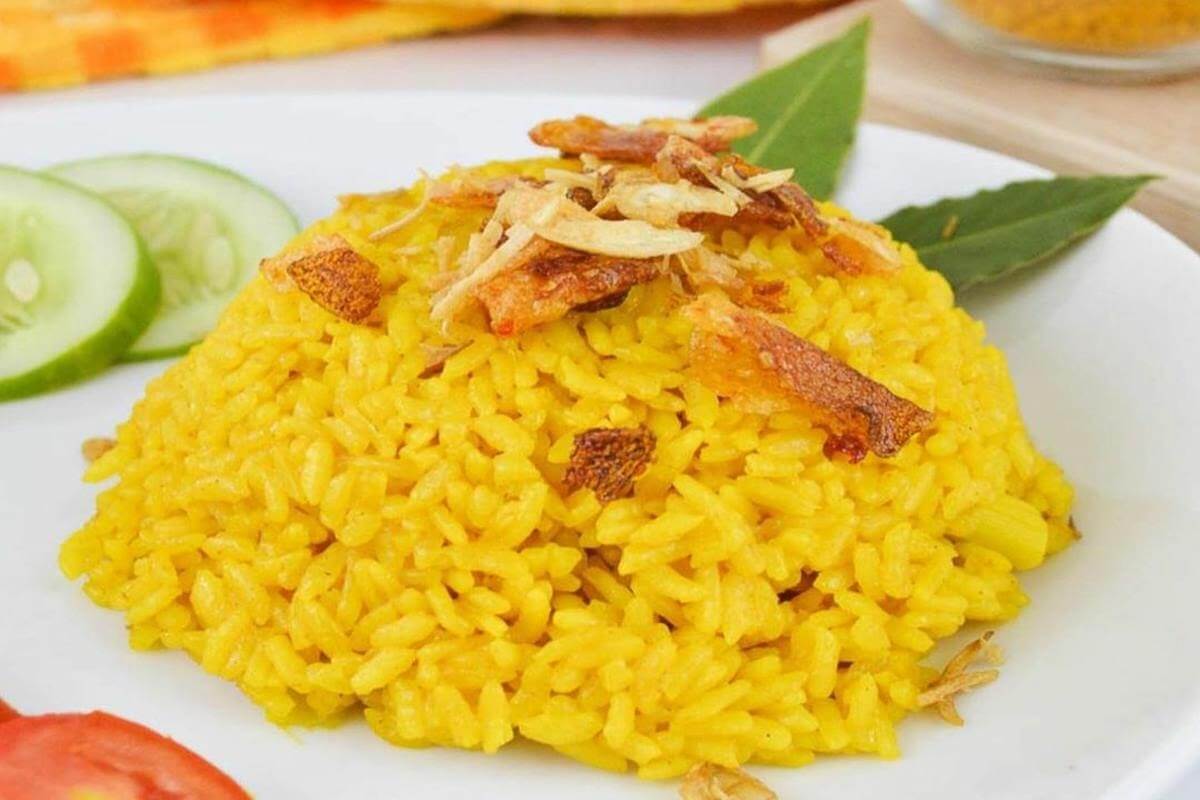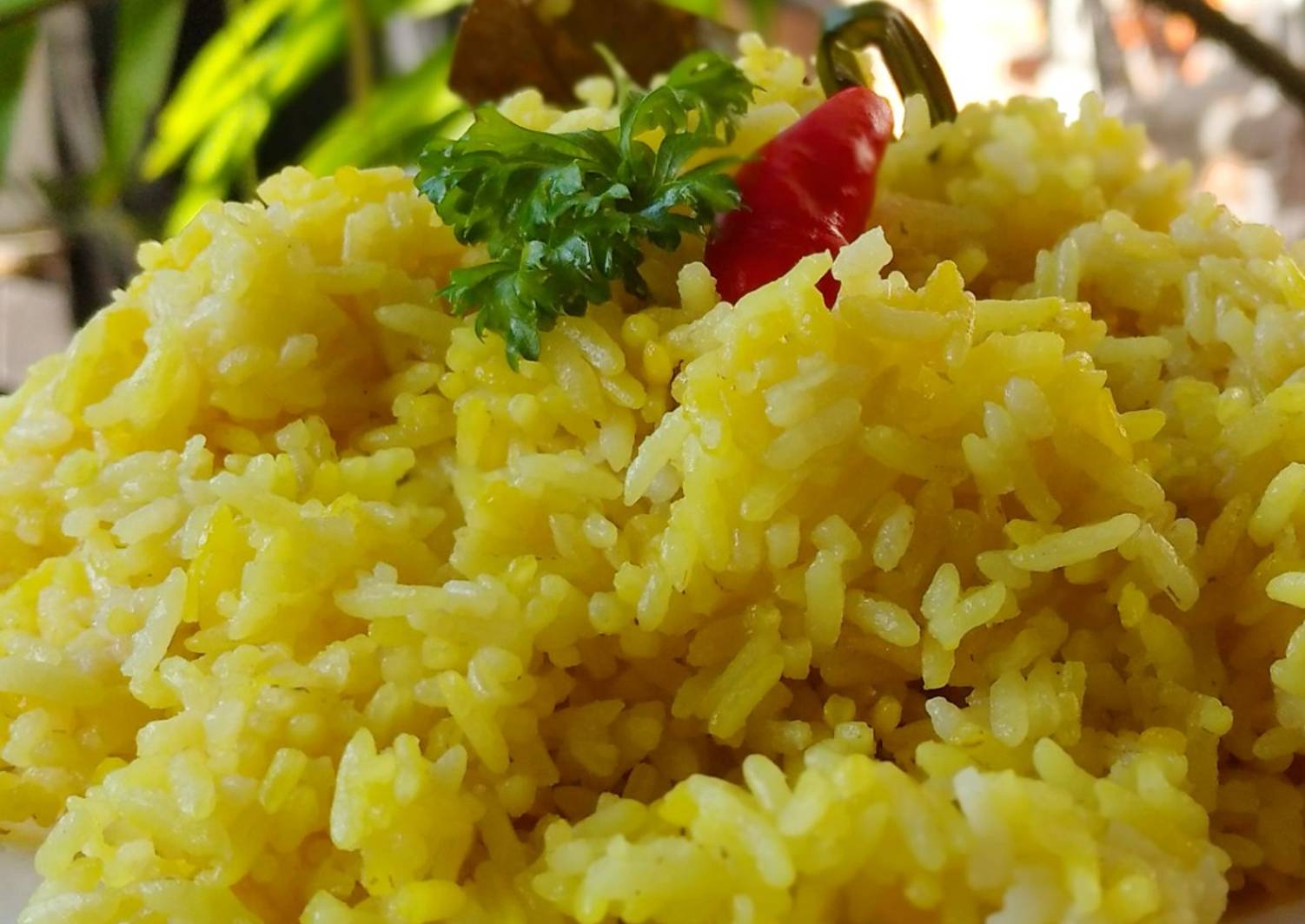Embark on a culinary adventure as we delve into the secrets of creating the iconic Indonesian dish, Nasi Kuning, using the convenience of a rice cooker. This vibrant yellow rice dish is a staple in many Southeast Asian cuisines, and with this guide, you’ll master the art of preparing it in your own kitchen.
Our comprehensive recipe provides detailed instructions, from gathering the necessary ingredients to serving the final masterpiece. We’ll explore the benefits of using a rice cooker for this recipe and offer tips for customizing the dish to your taste preferences. Get ready to tantalize your taste buds and impress your loved ones with this flavorful and authentic Nasi Kuning.
Ingredients
To prepare this delectable Nasi Kuning using a rice cooker, you’ll need the following ingredients:
Essential Ingredients:
- 2 cups jasmine rice or long-grain white rice
- 3 cups coconut milk
- 1 teaspoon turmeric powder
- 1/2 teaspoon salt
Optional Ingredients for Enhanced Flavor and Texture:
- 1 stalk lemongrass, bruised
- 2 kaffir lime leaves, torn
- 1/2 cup chopped shallots
- 1/4 cup chopped fresh cilantro
Equipment

For cooking nasi kuning in a rice cooker, you will need a few essential pieces of equipment. Firstly, you will need a measuring cup and spoon to ensure accurate measurements of ingredients. A rice cooker is indispensable for this recipe, as it simplifies the cooking process and ensures even cooking.
Additionally, a food processor or blender can be helpful for grinding spices and creating a smoother paste for the rice.
Rice Cooker
A rice cooker is a convenient and efficient appliance for cooking nasi kuning. It automates the cooking process, eliminating the need for constant monitoring. The rice cooker maintains a consistent temperature, ensuring that the rice is cooked evenly and does not burn.
Furthermore, rice cookers typically have a non-stick coating, making cleanup a breeze.
Step-by-Step s

Preparing nasi kuning in a rice cooker is a simple and straightforward process that involves a few basic s. By following these s carefully, you can create a delicious and authentic nasi kuning dish that will impress your family and friends.
Before you begin, it is important to note that the cooking time and water ratio may vary depending on the type of rice you are using. Jasmine rice, for example, will cook faster than brown rice and will require less water.
It is always best to consult the package directions for the specific type of rice you are using.
Measuring and Mixing
- Measure out the desired amount of rice and rinse it thoroughly under cold water until the water runs clear. This will remove any excess starch and help the rice cook evenly.
- In the rice cooker bowl, combine the rinsed rice, turmeric powder, coconut milk, water, and salt. Stir well to combine all the ingredients.
Cooking
- Close the lid of the rice cooker and select the “cook” or “white rice” setting. The rice cooker will automatically cook the rice until it is done.
- Once the rice is cooked, let it stand for 5-10 minutes before fluffing it with a fork. This will help the rice to absorb any remaining moisture and prevent it from becoming sticky.
Serving Suggestions
Nasi kuning can be enjoyed on its own or accompanied by a variety of traditional dishes.
Accompaniments
Traditional accompaniments for nasi kuning include:
- Rendang: A spicy beef or chicken stew
- Ayam goreng: Fried chicken
- Acar: A pickled vegetable salad
Garnishes
To enhance the presentation of nasi kuning, consider garnishing with:
- Fried shallots
- Sliced hard-boiled eggs
- Fresh cilantro leaves
Variations
Nasi kuning can be customized with various ingredients and spices. Consider adding:
- Vegetables: such as carrots, peas, or corn
- Spices: such as cumin, coriander, or turmeric
Last Word
As you embark on this culinary journey, remember that cooking is an art form that allows for creativity and experimentation. Feel free to adjust the ingredients and proportions to suit your palate and create a dish that truly reflects your unique style.
Whether you’re a seasoned chef or a novice in the kitchen, we hope this guide empowers you to confidently prepare this beloved Indonesian delicacy.
Q&A
What type of rice is best for Nasi Kuning?
Traditionally, fragrant long-grain rice, such as Jasmine or Basmati rice, is used for Nasi Kuning. These varieties provide a light and fluffy texture, enhancing the overall flavor of the dish.
Can I add vegetables to my Nasi Kuning?
Absolutely! Feel free to incorporate your favorite vegetables into the recipe. Sautéed carrots, peas, or green beans are popular additions that add color and nutritional value to the dish.
How can I make my Nasi Kuning more flavorful?
Experiment with different spices and herbs to enhance the flavor profile of your Nasi Kuning. Cumin, coriander, and turmeric are traditional seasonings that add depth and warmth to the dish. You can also try adding a touch of ginger or lemongrass for a refreshing twist.
